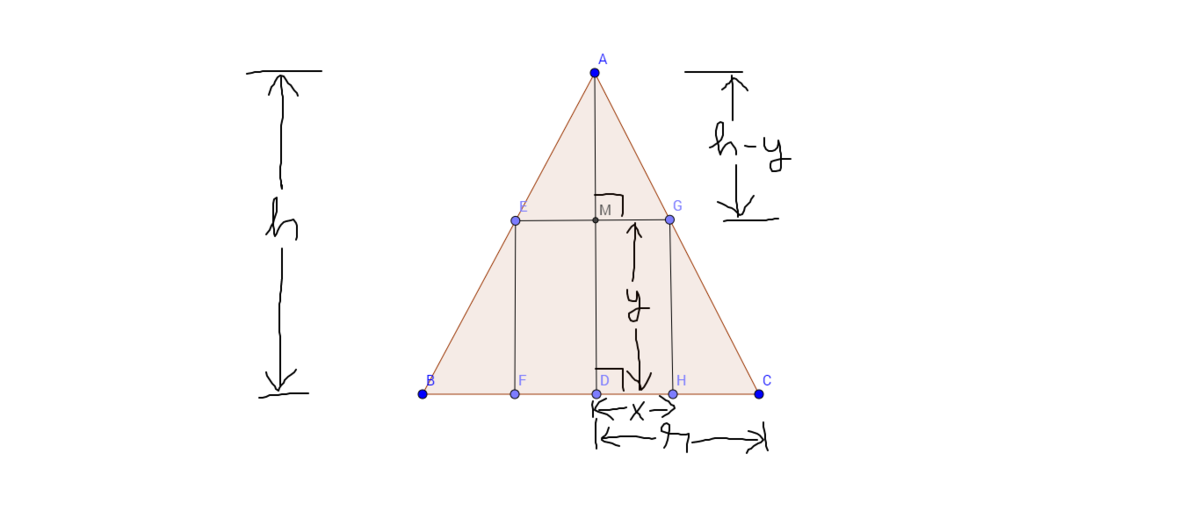Check the Topic!
Find the maximum lateral surface (curved surface) area in of a cylinder inscribed in a cone which has radius and height as
Give your answer to 2 decimal places.
The answer is 12.57.
This section requires Javascript.
You are seeing this because something didn't load right. We suggest you, (a) try
refreshing the page, (b) enabling javascript if it is disabled on your browser and,
finally, (c)
loading the
non-javascript version of this page
. We're sorry about the hassle.
Imagine the figure to be 2-Dimensional with the cone to be a triangle and the cylinder to be a rectangle. Since
△
A
D
C
,
△
A
M
G
and
△
G
H
C
are similar to each other,using similarity properties we get
Since
△
A
D
C
,
△
A
M
G
and
△
G
H
C
are similar to each other,using similarity properties we get
r h = x h − y = r − x y
From the first and the last term we get y = r h ( r − x )
Since the lateral surface area of a cylinder is 2 π x y = r 2 π x h ( r − x ) .
Since the r 2 π h is constant,we bring it out. L . S . A = r 2 π h ( r x − x 2 )
So we have to only differentiate ( r x − x 2 ) and equate it to 0 so as to maximize the L . S . A .
After differentiating,we get r − 2 x = 0 ⇒ x = 2 r and plugging this in the equation we found earlier,we get y = 2 h .
Therefore,the lateral surface area of the cylinder = 2 π x y = 4 π = 1 2 . 5 7 .